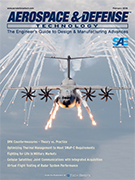Article
SAE International’s latest podcast on cybersecurity and aerospace
2018-10-02
Special guest Kirsten Koepsel, lawyer and engineer specializing in cyber security, talks with SAE International about how this new environment affects the planes and airports we use every day.



